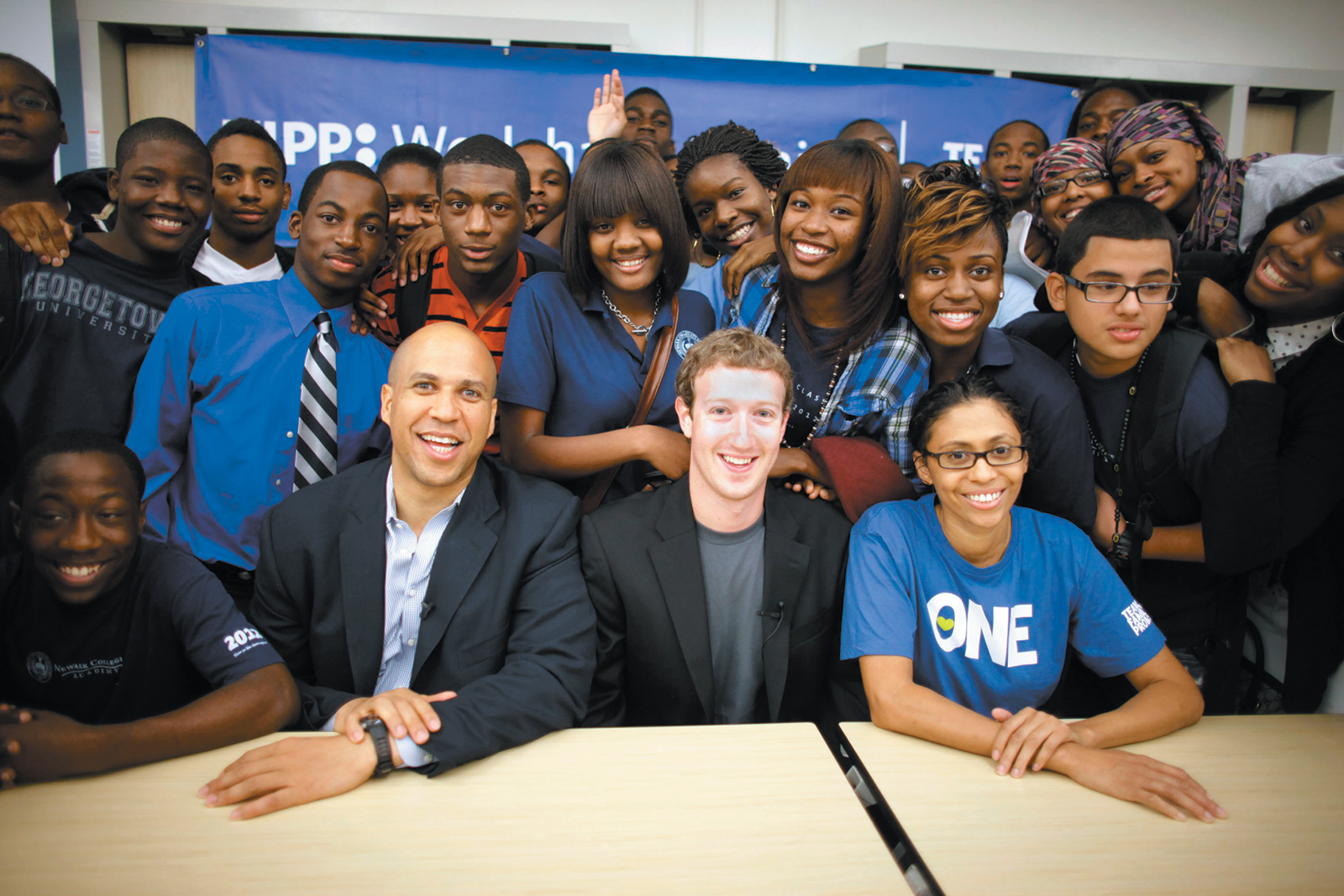Solving the Mystery of the Schools
Diane Ravitch
The Prize: Who’s in Charge of America’s Schools?
by Dale Russakoff
Houghton Mifflin Harcourt, 246 pp., $27.00
Mission High: One School, How Experts Tried to Fail It, and the Students and Teachers Who Made It Triumph
by Kristina Rizga
Nation Books, 295 pp., $26.99

In recent years, American public education has been swamped by bad ideas and policies. Our national leaders, most of whom were educated at elite universities and should know better, have turned our most important domestic duty into a quest for higher scores on standardized tests. While it is true that students must do well on standardized tests to enter universities, few of the better universities judge students’ knowledge and ability solely by such flimsy measures. Thus it is puzzling why public officials have made test scores the purpose of education.
The heavy reliance on standardized tests in schools began with the passage of George W. Bush’s No Child Left Behind legislation in 2001. The law mandated that every child in every school would take standardized tests in reading and math from grades three through eight and would achieve “proficiency” by the year 2014. No excuses. Even children who could not read English and children with significant cognitive handicaps would be expected to reach “proficiency.” Every state was left to define “proficiency” as it wished.
The punishments for not achieving higher test scores every year were increasingly onerous. A school that fell behind in the first year would be required to hire tutors. In the second year, it would have to offer its students the choice to move to a different school. By the end of five years, if it was not on track to achieve 100 percent proficiency, the school might be handed over to a private manager, turned into a charter school, taken over by the state, or closed. In fact, there was no evidence that any of these sanctions would lead to better schools or higher test scores, but no matter.
With these sanctions in mind, schools made intense efforts to prepare children to take the all-important tests. In some places, like Atlanta, Washington, D.C., and El Paso, Texas, teachers, principals, and superintendents cheated, changing the scores to save their jobs or their schools. Schools across the nation spent more time and money on preparing materials to help students pass tests and reduced the time for the arts, science, history, physical education, and even recess. Some states, such as New York and Illinois, manipulated the passing scores on the tests by lowering the definition of proficiency needed in order to demonstrate progress.
After Bush left office and was replaced by Barack Obama, the obsession with testing grew even more intense. Congress gave Secretary of Education Arne Duncan $5 billion in economic stimulus funds to encourage education reforms. Duncan released a plan in 2009 called Race to the Top, pledging that American students would be “racing to the top” of the international tables of comparative scores if they followed his policies.
In order to be eligible to compete for a share of that money at a time of deep economic distress, states had to adopt Duncan’s strategies. They had to expand the number of privately managed charter schools in the state; they had to agree to adopt “college-and-career-ready standards” (which were the not-yet-completed Common Core State Standards). They had to agree, moreover, to evaluate teachers in relation to the rise or fall of the test scores of their students; and they had to agree to “turn around” schools with low test scores by firing the principal, or firing all or half of the staff, or doing something equally drastic.
The standardized tests immediately became more important than ever. Some states introduced standardized testing as early as kindergarten to begin getting children ready for the big standardized tests that would consume their time in school from grades three through eight. The competition among the states was keen; everyone needed more money. Forty-six states and the District of Columbia changed their laws to make themselves eligible for Race to the Top funding; only eighteen states and D.C. won the money.
Duncan endorsed the premise of the No Child Left Behind Act that standardized tests are the best measure of student achievement; but he was upset that the fifty states each had its own standards and tests. Thus when several Washington-based groups (the National Governors Association, Achieve, the Council of Chief State School Officers, and Student Achievement Partners) began work on national standards, Duncan cheered them on. Federal law bars any federal official from seeking to influence or control curriculum or instruction, and Duncan drew a fine line between his outspoken advocacy for the Common Core standards and his funding of Race to the Top. However, he did allocate $360 million to two consortiums of testing experts to prepare new tests for the Common Core State Standards.
As it happened, the Bill and Melinda Gates Foundation spent at least $200 million to pay for the writing and distribution of the standards. It also awarded millions of dollars to practically every influential national education organization to encourage them to support the standards, including the two major teachers’ unions, think tanks on the right and left, and civil rights organizations. Advocates for the standards claimed that they would make America globally competitive and would close the gaping test score gaps between white and Asian students on one hand, and African-American and Latino students on the other.
They didn’t know that this was true because the standards had been just written and never tried out, but they dutifully carried this message to the mass media and the public. Before long, a public backlash developed against both the Common Core standards and testing, in large measure because they were imposed with Solving the Mystery of the Schools by Diane Ravitch | The New York Review of Books:
